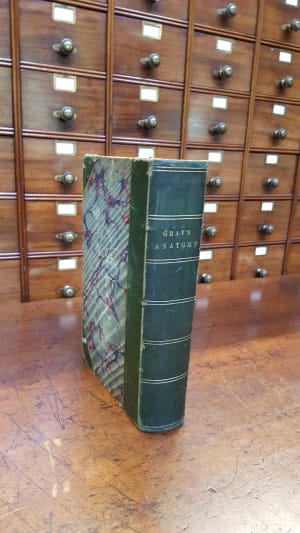Gray’s Anatomy Descriptive and Applied: the greatest account of anatomical understanding available
17 Aug 2018
Corinne Hogan
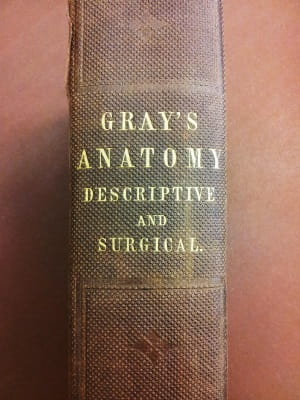
Why was it so influential?
Apart from clear illustrations what made the work so important that it has never been out of print (almost 160 years) since it was first published? What Carter chose to leave out, as much as what he chose to show was of equal importance. His editing of the structures he was drawing to emphasise what was of functional and practical importance to the dissector, student, and surgeon made the book indispensable to its readers. This editing was important in itself and it complemented Carter’s ground-breaking incorporation of the anatomical terms into the image, therefore negating the need for a separate and cumbersome key. The first-hand knowledge Carter needed to make such lifelike illustrations came from the access he had, through his work at St George’s Hospital Medical School, to dissection. Gray and Carter worked together in the dissecting studio at St George’s to dissect bodies obtained via the Anatomy Act.
Where do the specific links between the book and the RCS lie?
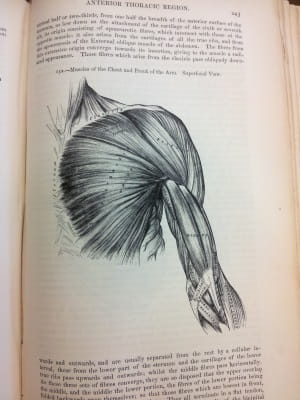
Left: the muscles of the chest and front of arms.
How complete is the collection of editions held by the RCS Library now?
In January 2015 the RCS holdings of Gray’s Anatomy was reviewed and assessed for significance. It was noted that the RCS appeared to hold more editions than any other library in the UK. Nevertheless, the set was still short of a few editions, so we have been actively filling the gaps since then to strengthen the collection. The first step was to appeal to College members. This produced donations of the 1938, 1962 and 1980 editions. We then looked to see if the remainder were available for purchase.
The PRISM Fund grant for the 3rd 1864 edition
This particular purchase furnished the collection with the earliest missing edition, which was an extremely rare find in good condition on the open market. With Arts Council England support the Library acquired this significant historical item from a bookseller in the USA, taking it one step closer to obtaining the entire Gray’s collection of anatomical literature. The 3rd edition (1864) had not changed hands for sale at auction for 25 years prior to the College purchasing it and evidence from OCLC suggests that only 17 other libraries in the world hold this version.
Left and right images: the 3rd edition of Gray's Anatomy.
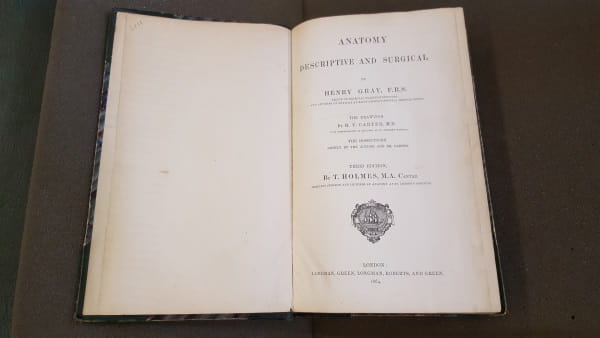
Nearing completion…
In addition to the generous donations from members, Library staff also sourced the last three copies. The final gaps for the
23rd edition 1926, 26th edition 1935 and 34th edition 1967, were tracked down on Amazon and eBay respectively, in the last quarter of 2017. This means that through donations, purchases and the key support of the grant from ACE RCS now holds a very unusual complete run of UK editions of Gray’s Anatomy, which appears not to be replicated in other UK medical reference libraries, or the British Library itself. At the RCS this is supported by holdings of other works authored by Henry Gray and a few sample editions of the US version of the Anatomy and of ancillary, more recent publications such as Gray’s Anatomy for Students. Moreover, the second of the College’s two copies of the 1st edition (Copy B) appears to be extremely rare and possibly unique among library copies in that it remains in its embossed brown cloth binding, just as it was purchasable for 28 shillings for use by a student in 1858. The Hunterian Museum also contains a wet dissection specimen attributed to Gray, which shows his careful dissection technique, and ability to display what he wanted his examiners/students to see.
Modern Gray’s
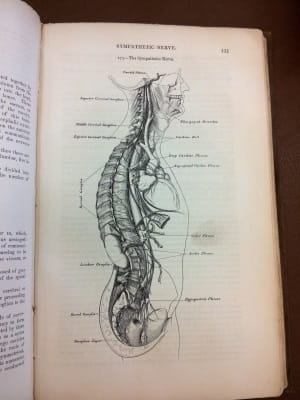
Left: the sypmathetic nerve.
Corinne Hogan, Senior Information Assistant

